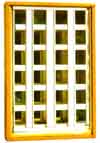Artlover's Brief Art History
Postimpressionism was a diverse art movement that engulfed the European art community at the later end of the 19th century.


The Fauvists' artwork made them appear to be the most advanced group working in Paris. The Fauvists had abandoned traditional art after the downfall of the Post-Impressionists.

While the German Expressionists may have been an obscure bunch, unknown in global respects, they did have a significant impact on art history as we look back on their accomplishments.

Today, the word Cubism, and its members, have become synonymous with innovation and idealism. People and critics viewed their art as something refreshing.
Futurism was an art movement that loudly and boldly proclaimed their discontentment with society, and it was a movement to emerge out of Italy.

Dadaism tried to make sense out of all the new ideas and principles coming out of the new era of modern art.


Surrealism set out to display painting and writing in close connection to the mind. The Surrealists primarily emphasized the minds' power to create artistic meaning.

The De Stijl movement encompassed a new type of style in modern art--architecture. This movement used the artistic talent of the artists by designing homes, buildings, and furniture.
Constructivism was an art movement that joined artists and their art with machine production and architecture.

For a brief time, America had the unusually pleasure of forming a serious art movement. The Abstract Expressionist movement marked an era in American history as the first major movement to originate in the U.S.


Pop Art was a movement that departed from the cliches of boldness so often portrayed in modern art. The Pop artists disconnected themselves from the idea that art must contain meaning in the abstract.

Kinetic Art was essentially an art movement that explored the artistic sides of motion. The movement itself contained many overtones including those of artistic, naturalistic, and technological backgrounds.
The birth of Op Art began with Time Magazine. In 1964, Time Magazine published an article featuring a new art wave that involved optical illusions.

Minimalism received much criticism from the public, who found it difficult to consider that a row of cubes, two rectangles sitting side by side, or five box-like objects hanging from a wall, could be called art.


Conceptual Art
(1960's and 70's)
Conceptual Art ends the colorful definable
era of "modern art". Today, Post Modernism, New Modernism, or the Art
of Identity, have taken on a whole new market. Today's artists are no
longer a part of a collective source, but have delved into new trends
and ideas that seem to change from year to year. Conceptual Art helped
gain this independence, and in some sense, completes a source of new freedom
began by the Impressionists 100 years ago.
Note: This historical compendium was compiled by Darlene Tran CSUS